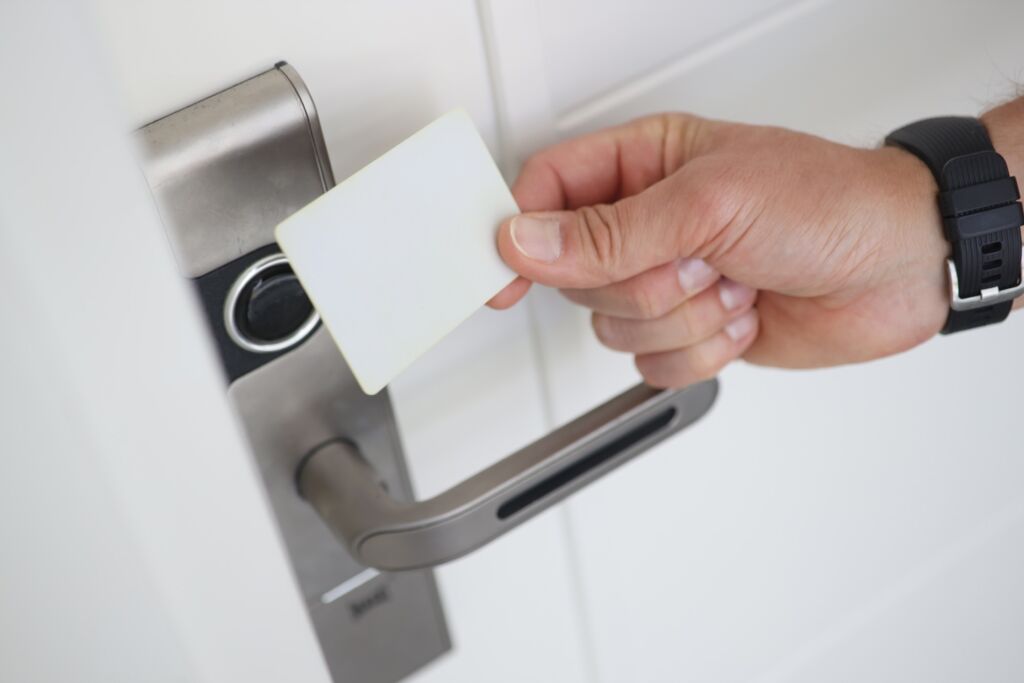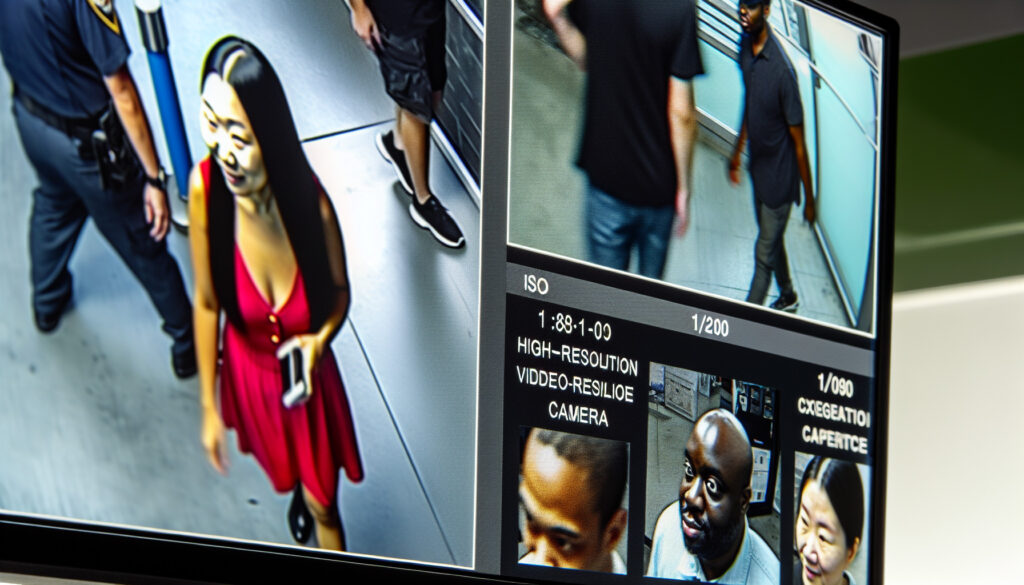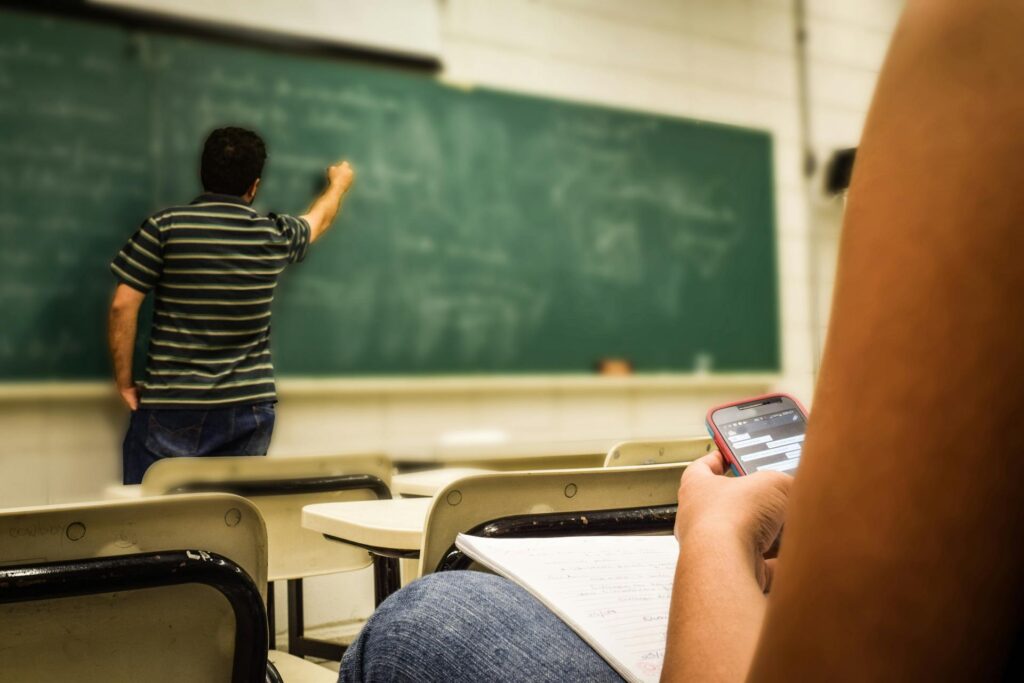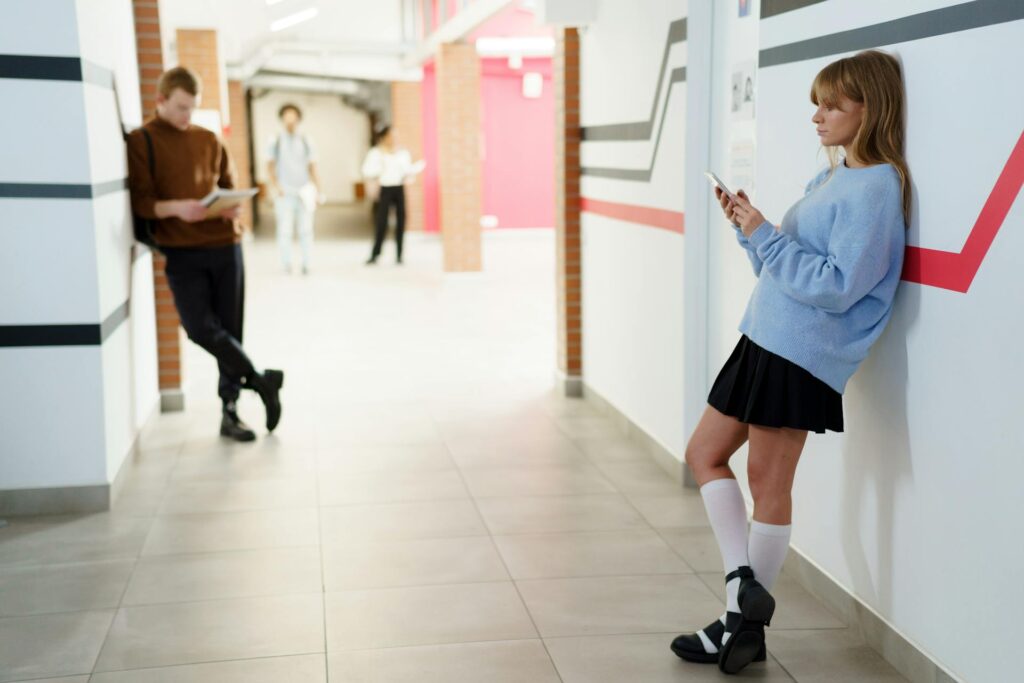Are educational facilities safe enough? Today, campus and school security is a pressing concern, directly impacting student and staff welfare. Addressing this, we’re focusing on the pivotal role advanced access control systems play in enhancing security. Through this article, gain crucial insights to proactively implement and manage these technologies, ensuring a safe educational environment.
Article Overview
Advanced access control systems are crucial for fortifying educational institutions against unauthorized entry, enhancing campus and school security, and maintaining a safe learning environment for students and staff. Access control systems in schools are multifaceted, encompassing components like card readers, field panels, and software that manage entry points and integrate with proactive video monitoring to deter potential security threats.
Regular security assessments, staff training, and continuous improvement are best practices in campus and school security, ensuring an ongoing process of adaptation and enhancement to address evolving security challenges.
The Importance of Campus and School Security
The field of campus and school security is constantly evolving, adapting to new challenges with the paramount goal of protecting students and staff. Given the recent uptick in school-related incidents, the focus on finding security systems for schools measures has intensified, resulting in frequent safety drills and an increased sense of risk among students and educators.

The anxiety and distraction stemming from fear of potential threats can significantly affect student well-being and hinder the academic and creative processes that are essential to learning. Hence, deploying dependable security measures is crucial to sustain a secure environment that enables students and staff to concentrate on their educational endeavors, mitigating any potential threat.
Considering the stakes, schools and campuses must be fortified against potential threats. This is where advanced access control systems come into play. These systems provide comprehensive protection and control, acting as a solid defense against unauthorized entry and potential criminal activities.
Protecting Students and Staff
Security measures in educational settings, such as the installation of visible security cameras, have been shown to prevent crimes, thereby fostering a sense of security. They offer protection to both students and staff, allowing them to concentrate on their primary roles in the educational process.
Specifically, security cameras enhance teacher safety, allowing educators to focus on instruction rather than security worries. After all, a teacher’s primary role should be to educate, and any distraction from this role can affect the quality of education delivered.
The presence of security cameras also offers students a sense of safety, allowing them to focus on their studies without fear. Advanced security measures safeguard students and staff, fostering an ideal learning environment and demonstrating their critical role in educational institutions.
Preventing Unauthorized Access
Contemporary access control technologies, like proximity cards with card readers and magnetic door locks, play a pivotal role in managing school activities, significantly aiding in thwarting unauthorized entry. Schools establish single main entrances with clear signage and implement the following systems:
- Camera systems
- Intercom systems
- Buzzer systems
- Security vestibules linked to safety checks
These measures ensure tight control over who enters the premises, including the business owner.
To enhance oversight, schools have implemented several security measures, including:
- Reconfiguring the main entrance to direct traffic through the main office
- Implementing sign-in and sign-out procedures for visitors
- Securing entry points for custodial and delivery services
- Educating students and staff not to open doors for outsiders
- Employing dedicated security personnel, such as School Safety Officers (SSOs), to intercept unauthorized individuals and report them.
These measures help ensure the safety and security of the school environment.
Maintenance and repair of access control systems are equally important in guaranteeing their ongoing efficiency. Through these measures, schools can effectively prevent unauthorized access, enhancing overall security and protection.
Implementing Access Control Systems in Educational Institutions
In educational institutions, access control systems act as a fundamental security tool to protect against potential threats and data breaches. They determine who is allowed to enter certain areas and access data, apps, and resources, relying on techniques like authentication and authorization.
These systems can be implemented using various strategies, including:
- Physical versus logical access controls
- Attribute-based controls
- Role-based controls
- Establishing emergency access accounts
- Enforcing conditional policies
They begin at the perimeter, with cameras in parking lots and single entryways, and centralize during school hours to the monitoring center, ensuring the safety of students, staff, and assets in the same way.
Contemporary access control systems:
- Integrate cloud-based systems for improved efficiency without significant costs
- Confirm that every user has suitable access levels based on their authenticated identity
- Are fundamentally designed to protect against data theft and other unauthorized activities
- Demonstrate their essential role in educational institutions
Key Components of Access Control Systems

Access control systems consist of several key components that work in tandem to ensure the safety and security of the premises. They often utilize card readers, which can be insertion, swipe, or proximity-based, and include keypads for numeric code entry, and electric lock hardware to manage door operations.
Field panels serve as the nerve center of an access control system, connecting and managing communications between system hardware and software components. The accompanying access control software maintains a central database that manages the detailed records of access events and coordinates information among all connected components.
Additionally, the integration capabilities of access control components, like the Verkada AC41 Door Controller, enable real-time video analytics, boosting the effectiveness of the security system. These components work together to provide a comprehensive and effective security solution for educational institutions.
Customizing Access Levels
One notable benefit of contemporary access control systems is the capability to tailor access levels. Cloud-based access control systems managed centrally from one dashboard enable unified handling of all entry points. This means that different user groups such as students, staff, or visitors can be given customized access rights, aligning unlock settings with varying schedules.
Enhancements to access control systems can be achieved by integrating with current hardware, thus allowing for cost-effective upgrades without complete system replacement. Schools and campuses can elevate their security by employing advanced features such as two-factor authentication and providing temporary digital keys to visitors’ smartphones for controlled access.
The capability to customize access levels provides a flexible and efficient approach to managing premises access, bolstering the overall security of educational institutions.
Proactive Video Monitoring for Campus and School Security
Proactive video monitoring, a type of video surveillance system, is instrumental in boosting campus and school security. This system uses advanced video analytics, such as the detection of humans and vehicles, and can intervene in real time when unauthorized activity is observed.
Proactive monitoring can issue a live audio warning through active deterrent alarm security cameras, effectively deterring intruders in most instances. As an intervention specialist assesses live video feeds, they execute policy-based responses to suspected threats, which can prevent potential security incidents.
Additionally, proactive video monitoring can:
- Disseminate the live video feed to law enforcement, enabling a faster and more efficient emergency response
- Provide highly accurate vehicle and human detection, reducing false alarms
- Craft faster, more efficient incident response strategies
The proactive approach to video monitoring has proven reliable in these areas, while reactive video surveillance serves as a complementary solution.
Intelligent Surveillance Technology
Intelligent surveillance technology has markedly improved the efficacy of security systems in educational institutions. This technology includes advanced video analytics features such as people counting, facial recognition, and object detection.

AI security cameras have the following capabilities:
- Trigger alarms and record events in the NVR’s database when a human face is recognized, contributing to identifying suspicious activities
- Car/motor vehicle detection
- Intrusion detection
- Tracking moving objects
Auto-Tracking PTZ Cameras with AI Software have these capabilities.
Additionally, the Viewtron security camera app allows for connecting to Viewtron IP camera NVRs, which support AI functions for IP cameras, facilitating the management and viewing of surveillance feeds.
Surveillance cameras are strategically positioned at entrances to discourage unauthorized entry, document evidence of individuals accessing the school, and capture license plates.
Integration with Access Control Systems
Schools can enhance real-time monitoring, response times and remote management efficiency by integrating CCTV with access control systems, enabling the systems to function harmoniously. Best practices for integrating video surveillance with access control include strategically placing cameras, monitoring real-time footage, and using analytics for automatic detection and alerts for security personnel.
When video monitoring is integrated with access control systems, security events can be viewed comprehensively by correlating video footage with access events, which is critical in security management within educational institutions. Schools can maintain logs of video clips associated with specific access events, aiding in auditing and precise investigation of incidents.
Modern camera-based security systems in schools offer benefits such as:
- Sharing critical footage with authorities
- AI analytics for detecting suspicious behavior
- Remote monitoring, ensuring robust emergency preparedness
- Integrated systems facilitate video verification, assisting in quick identification of false alarms, hence minimizing needless disruptions and misuse of emergency services.
Emergency Response and Communication

During a security incident, efficient emergency response and communication are crucial for handling the situation. Here are some ways to enhance emergency response protocols:
- Alarm systems integrated with access control can signal alerts during unauthorized entry attempts or emergencies like fires.
- Security cameras provide real-time footage, which facilitates an immediate response and sharing information with authorities for swift action.
- Remote access to door locks allows security personnel to secure or grant access to areas of the campus quickly during an emergency, which is vital for managing the situation effectively.
In every emergency situation, proficient communication is equally important as the initial response. The next two subsections will further elaborate on the importance of mass notification systems and collaboration with local authorities in enhancing emergency response and communication.
Mass Notification Systems
Mass notification systems in schools are an essential tool for ensuring that the entire school community is informed, engaged, and safe during emergencies. The COPE (Create once, publish everywhere) model in mass notification systems allows schools to deliver urgent messages across multiple channels quickly and in the user’s preferred language.
These systems save time and ensure information consistency by allowing the crafting of a single message to be distributed across multiple platforms. They reach a wider audience by publishing a message on multiple channels, catering to different communication preferences of parents, students, and staff.
Furthermore, platforms like Messages XR simplify mass notifications, offering the flexibility of sending regular communications or important announcements without subscription-based preferences. Consistent and timely communication using mass notification systems builds trust in the school’s commitment to keeping everyone informed.
Collaboration with Local Authorities
School Security Officers and School Resource Officers play pivotal roles in the safety and security of educational institutions, working in collaboration with local law enforcement to address potential threats. As part of this collaboration, local authorities are involved in developing and updating school safety protocols, ensuring alignment of strategies, and applying their expertise and experience.
Shared digital platforms, such as incident management systems and digital maps, enhance seamless communication between educational institutions and first responders, optimizing coordination during emergency situations. Some benefits of using these platforms include:
- Improved communication between schools and first responders
- Faster response times during emergencies
- Enhanced situational awareness for all parties involved
- More efficient coordination and resource allocation
In addition, joint emergency drills and safety assessments conducted with local law enforcement and emergency responders prepare school personnel and ensure that local authorities are familiar with school protocols, thereby improving the effectiveness of the emergency response.
Best Practices for Campus and School Security
As we explore the best practices for campus and school security, we must remember that security is an ongoing process, not a one-time implementation. It involves regular security assessments, staff training and awareness, and continuous improvement to keep up with the evolving security landscape.
The objective is to create an environment where security measures are so seamlessly integrated into the daily routine that they do not disrupt the primary function of the campus – education. The subsequent subsections will outline the three key areas that constitute best practices in campus and school security.
Regular Security Assessments

Frequent security assessments in schools are essential to identify potential vulnerabilities and areas where school safety and emergency procedures can be strengthened. Just as curricula and facilities are routinely evaluated for improvement, security and emergency readiness should undergo a perpetual enhancement process.
These assessments may involve evaluating the efficiency of physical security hardware, assessing threat levels, and managing school security personnel. Independent assessments from professionals unaffiliated with products employed by the schools can offer a valuable, objective examination of existing safety measures and inform how to build upon them.
Moreover, the detailed access event logs from access control systems facilitate prompt and effective audits and investigations in response to incidents of forced entry and unauthorized access. Regular security assessments are thus a crucial part of maintaining a safe and secure educational environment.
Staff Training and Awareness
Security Specialists and Officers (SSOs) hold the responsibility of maintaining order, averting crime, and probing into school policy infractions. While they are not required to have a law enforcement background, they must acquire state-specific certification.
To ensure they stay up-to-date with security protocols and regulations, SSOs must complete mandatory yearly training. This training equips them with the knowledge and skills required to effectively respond to various security situations.
The safety of students and staff is not solely the responsibility of security personnel. Every staff member should have knowledge of basic security protocols and procedures. This awareness, coupled with regular training, can significantly enhance the overall security of the campus.
Continuous Improvement
Continuous improvement models are critical in school safety, recommending the active involvement of staff members at all levels through the Plan-Do-Study-Act cycle. Educational institutions must periodically reevaluate and refresh their security strategies to tackle emerging security threats and incorporate advanced technologies.
Working in collaboration with security providers, such as Monarch, schools can develop access control systems that are tailored to their specific security needs. This approach ensures that security measures are continually improved and updated to effectively address the evolving security landscape.
Case Studies: Successful Implementations of Access Control Systems in Schools and Campuses
Case studies offer valuable insights into the practical application and effectiveness of access control systems in real-world scenarios. Educational facilities employ these systems to oversee entry and exit in specific areas, permitting entry solely to authorized individuals. These systems are instrumental in addressing challenges such as gun violence, theft, vandalism, and unlawful intrusions in school environments.
As part of access control strategies, door controllers and readers have been implemented in schools. They serve not just to deter unauthorized access but also to ensure adherence to health guidelines amid the COVID-19 pandemic. Apart from enhancing security, access control systems facilitate the monitoring of access to manage crowd control and optimize the usage of space in campus facilities. The following subsections will delve into two case studies that demonstrate the successful implementation of access control systems in university campuses and K-12 schools.
University Campus
Verkada’s access control systems have been successfully implemented in colleges and universities, significantly enhancing the safety of the campus environment. The security systems implemented are characterized by their smooth video integration and cloud-based software management, contributing to efficient campus surveillance and compliance with safety measures.
Access control solutions like those provided by Monarch and Verkada are designed to be not only secure but also scalable and straightforward for end-users, catering to the evolving needs of university campuses. This allows universities to manage access across multiple locations, ensuring the safety and security of their students, staff, and assets.
K-12 School
K-12 schools encounter unique security challenges that advanced access control systems can effectively tackle. Dynamic mapping in security systems enables real-time alerts from breached access points in K-12 schools. Door locks that can be operated by teachers during emergencies harden classrooms against potential threats.
The Federal Commission on School Safety has recommended the implementation of classroom door locks for crisis situations. Timely security responses in K-12 schools are facilitated by the direct alerts provided by advanced access control systems.
Summary
In conclusion, campus and school security is a matter of paramount importance that demands an effective and proactive approach. As we have seen, the implementation of advanced access control systems plays a crucial role in ensuring the safety and security of educational institutions. These systems offer extensive protection and control, serving as a robust barrier against unauthorized access and potential crimes.
The integration of these systems with proactive video monitoring, intelligent surveillance technology, and mass notification systems further enhances their effectiveness. Regular security assessments, staff training and awareness, and continuous improvement are critical in maintaining a safe and secure educational environment. By adopting these measures, schools and campuses can create a conducive learning environment where students and staff can focus on education without safety concerns.
Frequently Asked Questions
Why is campus safety and security important?
Campus safety and security is important because it ensures the well-being of students, staff, and visitors by reducing crime, preventing physical harm, and maintaining overall welfare on campus.
What type of security is most needed for schools?
The most needed type of security for schools is perimeter security, which includes access control, intercoms, drop arm barriers, and palisade fencing. This strengthens the security of educational facilities.
What does secured campus mean?
A secured campus means that the school has taken measures to protect students and staff from potential threats by locking doors, bringing students indoors, and continuing classroom instruction in safe conditions.
Is Tampa Florida good place to live?
Tampa, Florida is considered one of the best places to live in the Southeast due to its affordable living options, pleasant weather, and quick access to the beach. However, factors like high humidity, hurricanes, flooding, and traffic congestion should be taken into account before making a decision.
What are the key components of an access control system?
The key components of an access control system are card readers, electric lock hardware, field panels, and access control software. These work together to secure access to a facility.






